Why Is the Comprehensive Restoration of the Affected Settlements on Hold?
In April of last year, the government started a project to restore a number of settlements that were destroyed as a result of the war. Its uniqueness was in the application of a new, comprehensive approach to reconstruction, namely with the planning and complete transformation of these settlements, so the project became experimental.
It was planned to rebuild the settlements within two years, and the State Agency for Reconstruction and Development of Infrastructure of Ukraine was appointed to be responsible for the implementation of the experiment. However, the results of the first year of the experiment can hardly be considered successful. After all, out of more than three hundred planned objects, only one has been restored so far. We were not given a clear answer, but most likely it is about the repair of the road in the Kherson region.
The government and regional authorities blamed the State Agency for Reconstruction and Development of the Infrastructure of Ukraine and its manager for the failure of the project due to low performance indicators. He, in turn, appealed to the government's long delays and lack of funding. In the end, the political intrigues and vicissitudes that accompanied the implementation of the project became one of the reasons for the dismissal of the head of the agency.
We decided to find out what went wrong and investigated what the conditions of the experiment were and at what stage the restoration of the selected settlements is now. As it turned out, the unsuccessful start of the project was caused by both the lack of proper regulatory regulation and obstacles on the part of its participants and the government.
Disadvantages that were in the conditions of the experiment
The first stage in the implementation of the project was the selection of settlements for comprehensive restoration. The list approved by the government included:
- The rural settlement of Borodianka and the village of Moschun in Kyiv region;
- the city of Trostianets in the Sumy region;
- the village of Posad-Pokrovske, located on the border of the Kherson and Mykolaiv regions;
- the village of Tsyrkuny in Kharkiv region;
- the village of Yahidne in Chernihiv region.
All for different reasons. The villages of Yahidne and Tsyrkuny were included in the list at the initiative of regional military administrations, while Trostianets was included in this list at the initiative of the office of the President of Ukraine. Probably, for the same reason, the villages of Moschun and Posad-Pokrovske were included in the list, because shortly before the start of the experiment, the president visited them.
The determining criterion for selection should have been the level of destruction, but it varied significantly among the selected settlements. If more than 70% of all buildings were destroyed in Moschun, 15 were destroyed in the rural settlement of Borodianka and in the village of Tsyrkuny, and only 4% of buildings were damaged in the city of Trostianka.
This demonstrates the lack of a uniform approach to the selection, because in some cases priority was given to settlements with a significantly lower level of building destruction, and some of them were put on the list due to the instructions of political figures. Given the fact that the number of destroyed settlements in Ukraine is growing and probably not all will be rebuilt, it is necessary to develop criteria and a procedure for determining those settlements that will be subject to comprehensive restoration.
The next stage after approval of the list of settlements was the selection of objects for restoration, which lasted more than three months.
Lists of objects were formed according to a complex scheme. Local self-government bodies (LSGBs) first submitted their proposals to regional military administrations (RMA). They were processed and submitted for approval by the State Agency for Reconstruction and Development of Infrastructure of Ukraine. At the same time, some regional military administrations (RMA) repeatedly submitted updated lists, and some returned the lists of objects for restoration for revision. That is, the regional military administrations (RMAs) still had to contact the local self-government bodies (LSGBs) for clarifications. All this required additional time.
The selection procedure was negatively affected by the lack of requirements and criteria for restoration facilities. The Kyiv Regional Military Administration (RMA) submitted a list of objects to the State Agency for Reconstruction and Development of Infrastructure of Ukraine for approval, which included 108 private residential buildings in the village of Moschun. But, according to the head of the agency, the prime minister did not see the point in rebuilding housing within the framework of the experiment, because it can be done through the "eRecovery" compensation program. Thus, no similar project was ever approved for the village of Moschun. At the same time, in the villages of Posad-Pokrovske and Yahidne, the restoration of more than a hundred private residential buildings was approved.
The lack of legally established criteria for the selection of objects to be restored and the mediation of the regional military administration (RMA) slowed down this process and postponed the actual start of the project to the fall of 2023. In addition, the lack of a unified approach to the selection of restoration projects was the reason that the reconstruction of Moschun was actually completely excluded from the experiment.
In the end, 306 restoration objects were included in the approved list. At the same time, the disproportion in the number of some objects depending on the settlement was a consequence of the fact that some of the objects were not accepted and canceled by the regional military administration (RMA) and the State Agency for Reconstruction and Development of Infrastructure of Ukraine. Thus, in Posad-Pokrovsky and Yahidne, the approved list of objects for restoration included 128 and 122 objects, respectively, while only four were approved in the village of Tsyrkuny.
All because the Kharkiv Regional Military Administration (RMA) prioritized the restoration of the social and administrative infrastructure of the village. But can the reconstruction of four infrastructure objects be considered a comprehensive restoration of the settlement? No, it is hardly possible to think so. In this case, it would be appropriate to replace the settlement. Such an idea was even voiced by the head of the Kharkiv Regional Military Administration (RMA), however, due to constant shelling of the village. But the question of replacing the village of Tsyrkuny did not go further than the level of discussion of the regional military administration (RMA).
Delays in funding
The long process of selecting restoration projects directly affected the financing of the experiment, because the funds for its implementation in 2023 were allocated simultaneously with the approval of the list of these projects, which happened on August 4.
The the city of Trostianets became the only settlement in which restoration projects were planned to be fully financed in 2023. On the other hand, only 7% of the expected cost of the projects was allocated for the restoration of the village of Tsyrkuny last year. The restoration of rural settlement of Borodiankа was to be the most expensive, which was to cost 4.7 billion UAH, while the least money was planned to be spent on the village of Yahidne (404 million UAH).
However, the regional recovery services were able to start procurement only in mid-September, after the budget program passport was approved. As a result, by the end of 2023, expenditures under the experimental project for comprehensive restoration, namely cash advances and payment according to acts of completed works, amounted to only UAH 559 million out of the planned more than UAH 3 billion.
Three months before the end of the budget year, the recovery services made at least 237 purchases for the development of design and estimate documentation, construction and technical supervision. At the same time, the level of conditional savings (the difference between the expected cost and the amount of the concluded contract) for purchases was 21% on average.
In 2023, the amount of payments under contracts amounted to slightly more than 11% of the amount of concluded contracts. So with the end of the budget year, there was a need for additional funding to pay for what was done in 2024. In March, the government redistributed the balance of the Fund for the Elimination of the Consequences of Armed Aggression for 2023, but did not approve the allocation of funds for comprehensive recovery. Therefore, due to the lack of funding, the contractors of most projects suspended work, and in some cases even terminated the contracts.
Government procedures and political instability
According to the latest report of the State Agency for Reconstruction and Development of Infrastructure of Ukraine, in February 2024, the agency sent a request for the allocation of remaining unused funds in the amount of UAH 2.8 billion for the continuation of reconstruction works.
As of June, the draft of the financing order was under consideration at the Secretariat of the Cabinet of Ministers of Ukraine. However, it was not considered for more than a month, because the specialized government committee on reconstruction, headed by the former deputy prime minister for the reconstruction of Ukraine, did not hold meetings. Although it is worth noting that the dismissal of Oleksandr Kubrakov should not lead to a collapse in the work of the committee, because according to the existing distribution of powers, he should have been replaced by another deputy prime minister, namely Mykhailo Fedorov.
However, since the issue of allocation of budget funds for the experimental project is quite sensitive, it probably holds back the approval of the relevant decision until the election of the next Minister of Development of Communities, Territories and Infrastructure of Ukraine (Ministry of Reconstruction).
But while this search continues, time is gradually being lost for the restoration of social infrastructure and housing for those people who, due to participation in the experiment, refused compensation or other reconstruction mechanisms. Therefore, the government should reconsider its position regarding the actual suspension of project financing or offer an alternative that would meet the interests of its participants.
This publication was prepared as part of the project "Digital Transformation Activity", funded by USAID and UK Dev.
Please select it with the mouse and press Ctrl+Enter or Submit a bug










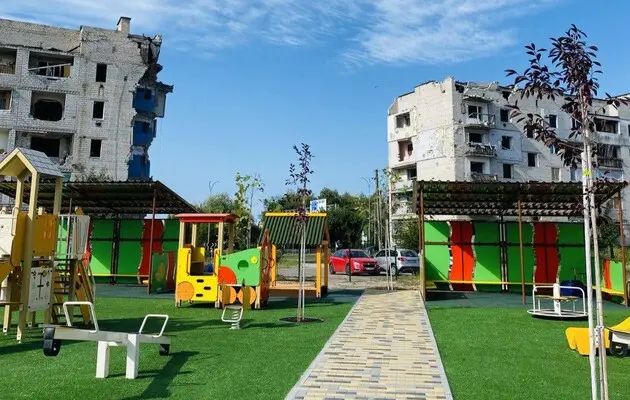
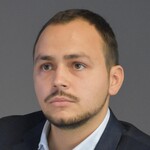
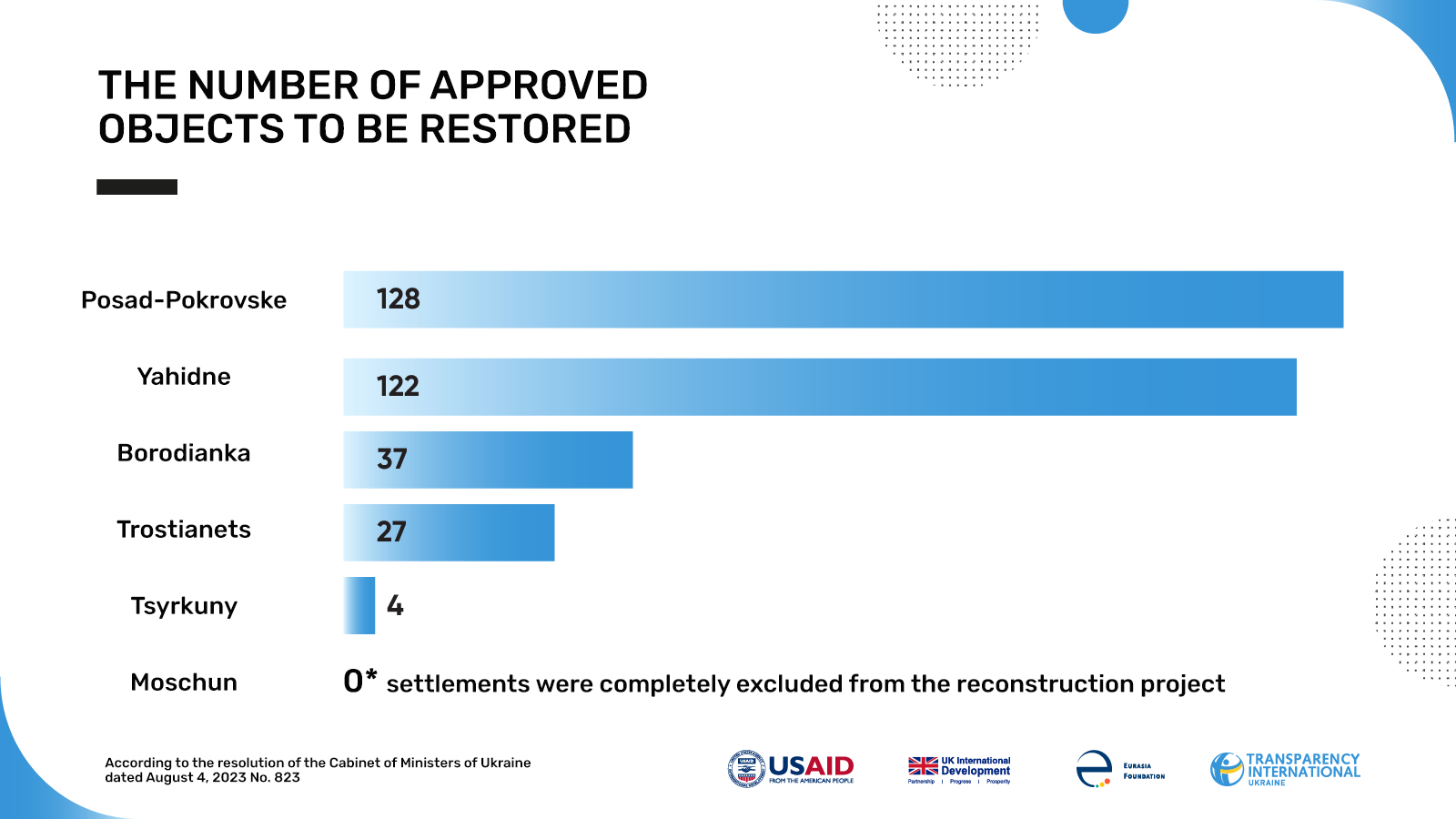
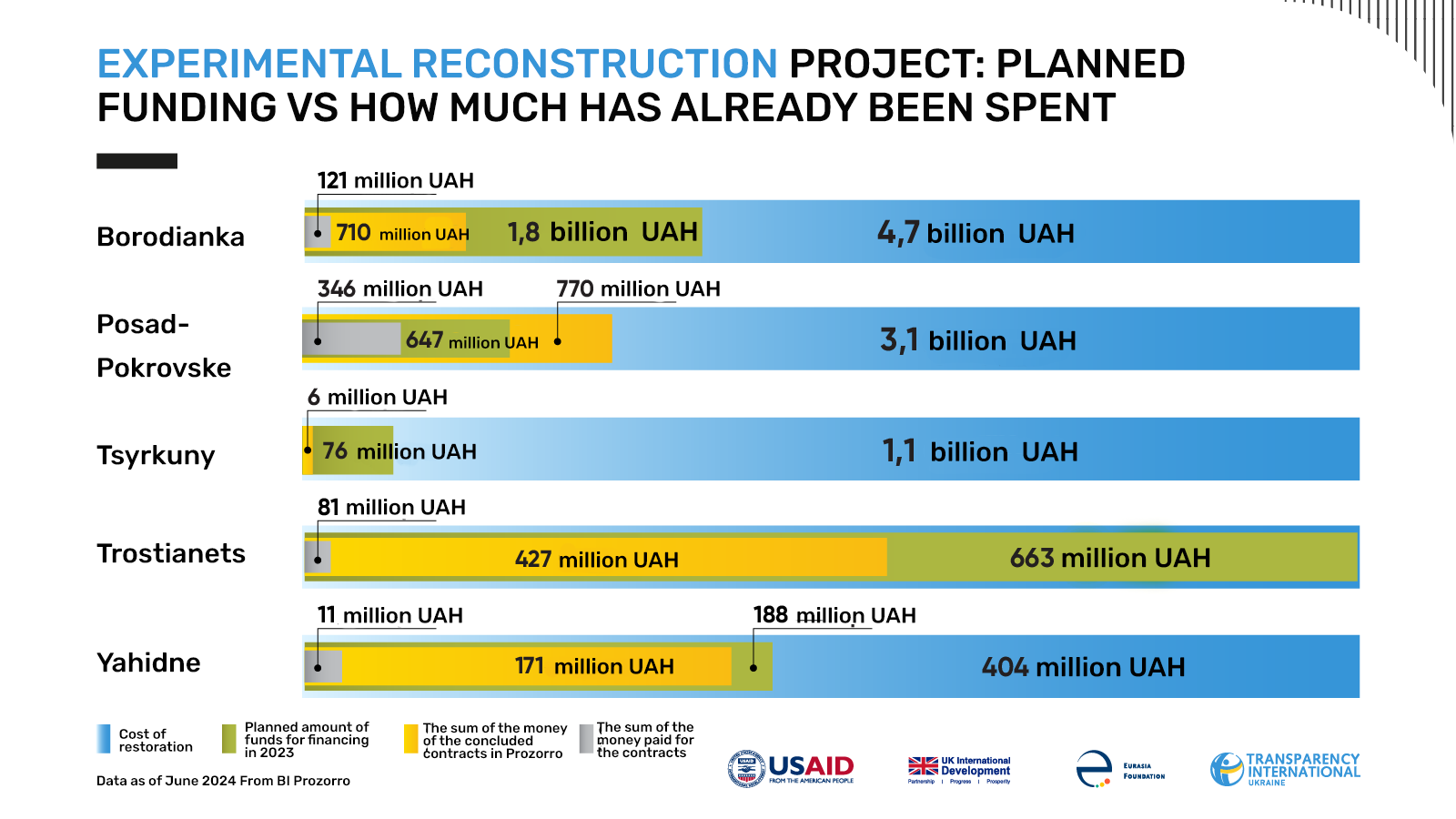
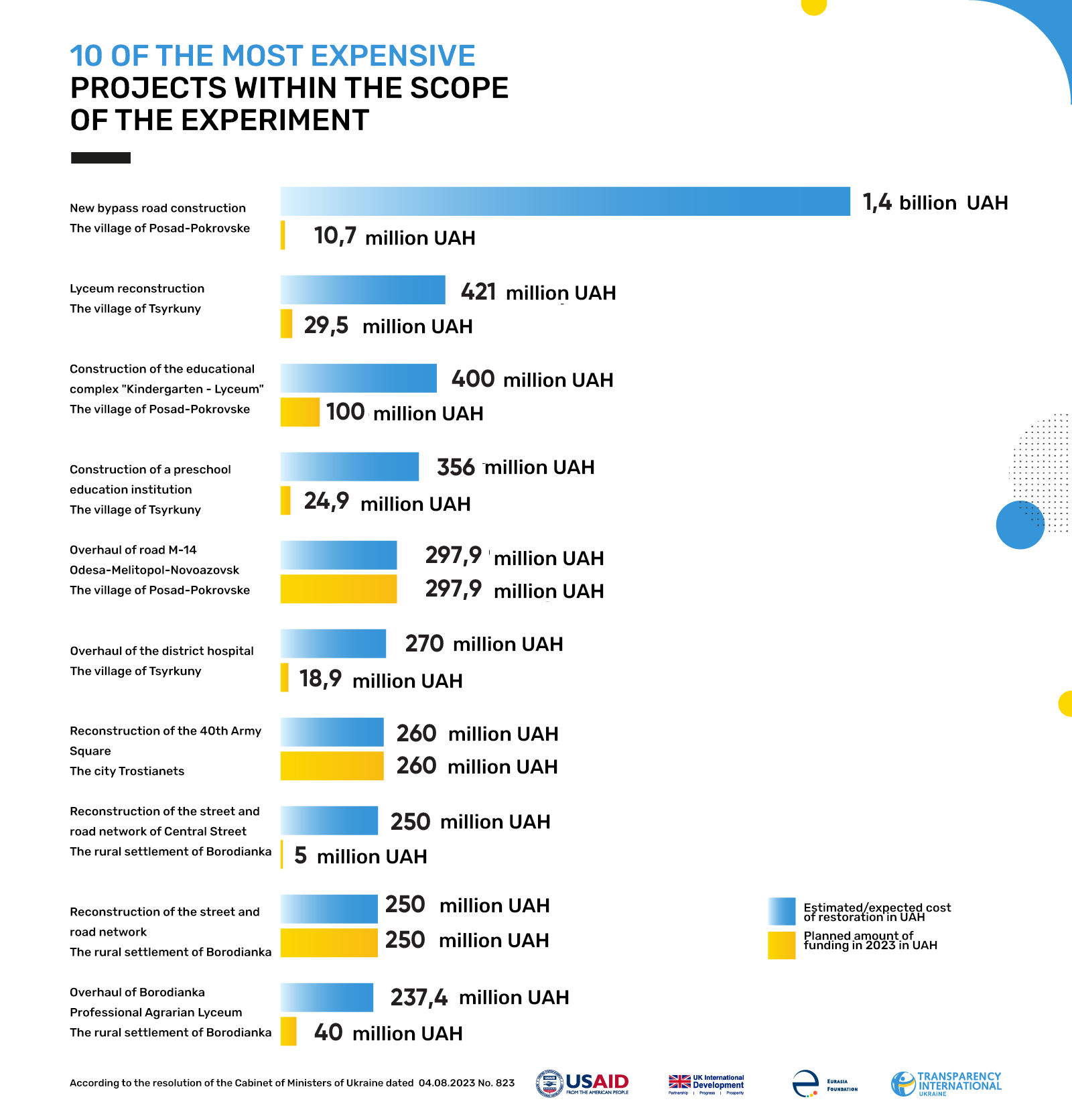
 Login with Google
Login with Google